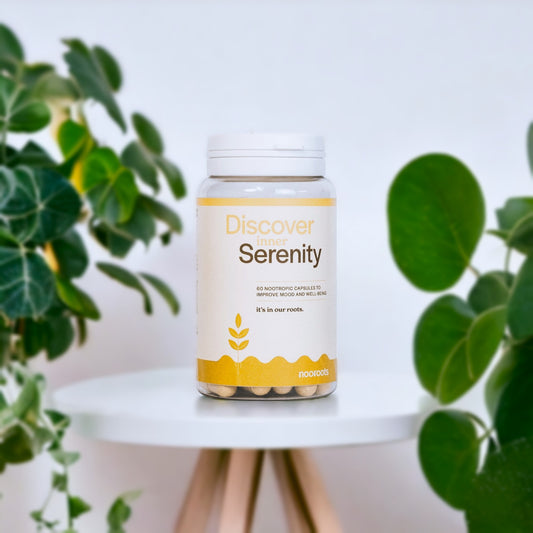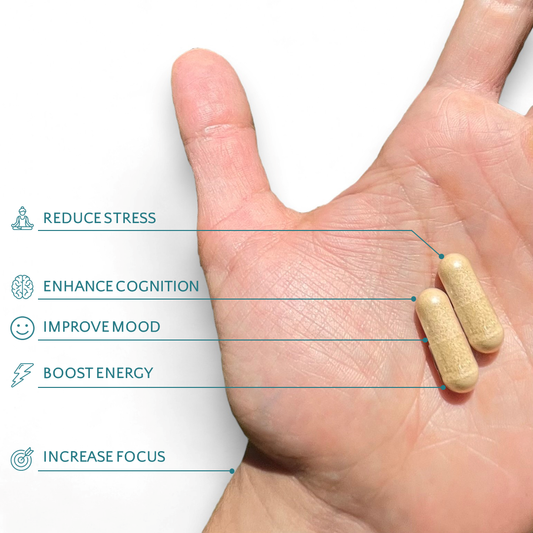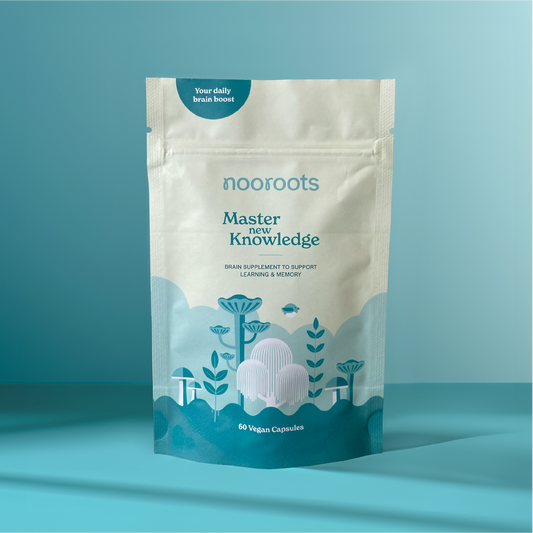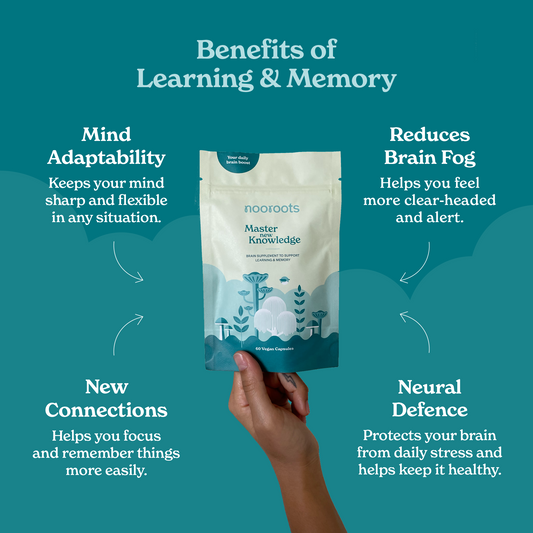Expert Writer and Contributor ✓
About the Author
Ben was awarded a Master of Science in Regenerative Medicine from Imperial College London. He is currently completing a PhD at Imperial.
About the Contributor
Mus was awarded a Master of Science degree in Medical Biotechnology and Business Management from the University of Warwick.
Kings and Queens rise and fall. Their exploits transverse oceans and landmasses. What they do in this mortal world echoes through eternity.
Native to the Indian sub-continent still rules a scared being. A Queen who has pierced through the fabric of time. Defied the rules of aging. Divine in the minds of the ancient Indian peoples as for millennia they have relied on their Queen for her medicinal qualities.
She is the Queen of the Herbs. More commonly known as Holy Basil.
Holy Basil is an aromatic plant that grows throughout India and Southeast Asia. The plant can grow nearly 20 inches and blossoms with elegant pink flowers that possess the most distinguishable smell.
While the Indian ancestors of today still believe and practice this early form of folk medicine, it has been left to modern science to understand how and why this tropical herb is beneficial to humans. We will join them on their quest for knowledge.
Contents
- What is Holy Basil?
- Holy Basil Benefits
- Holy Basil Mechanism of Action
- Holy Basil Side Effects
- Recommended Dosages of Holy Basil
Holy Basil: A Health Guide to Safe and Effective Supplementation

What is Holy Basil?
Ocimum sanctum, otherwise known as holy basil or tulsi, is a member of the mint family (yes, so too is the generic basil used for cooking!). It is believed that tulsi originated in India, but it is now native throughout Southeast Asia1,2.
Its roots in therapeutic applications date back thousands of years, forming a vital part of the Indian medicinal practice known as Ayurveda1–3. Holy basil is referred to as the “Queen of Herbs” by people who use this holistic medicine, and it is sacred in Hinduism1,2.
Holding an almost mythical status, holy basil has been shown to provide an array of beneficial effects.
Holy Basil Benefits
Holy basil supplementation is far from just pseudoscience. As stated, it has been used in traditional Indian medicine for millennia, and has numerous documented benefits:
- Brain boosting: it is well known that stress can be extremely detrimental to physical and mental functioning – holy basil counteracts this by enhancing neurotransmitters in the brain and reducing oxidative stress1,4
- Metabolism promoting : holy basil provides a number of advantages to your metabolism, including protection of the liver and kidneys and prevention of insulin resistance5,6
- Mood enhancing: studies have shown that the use of holy basil can improve symptoms in patients who are suffering from stress, anxiety and / or depression. In fact, the effects of supplementation were even comparable to that of commonly used antidepressant medication7–9
Holy Basil Mechanism of Action
Researchers are still utilising the tools of modern medicine to fully understand all of the beneficial effects that holy basil provides. To date, we have uncovered the following:
- Part of the body’s stress response is to produce what are called reactive oxygen species, which can then disrupt the blood-brain barrier and initiate cell death. It is believed that holy basil acts as a scavenger of these reactive oxygen species, stabilising them and preventing their detrimental effects4,10
- By lowering lipid levels in the serum and liver, holy basil may be prevent damage from hypercholesteremia, or high cholesterol levels6
- Ursolic acid, the active ingredient within holy basil, has been shown to increase the levels of several neurotransmitters in the brain, including dopamine. Deficiency of these neurotransmitters is believed to be a causal factor in depression; thus, holy basil may show improvements in cases of depression by recovering neurotransmitter levels8
Holy Basil Side Effects
As with anything, ingesting too much holy basil (in this case, an excessive amount) may cause some side effects11:
- Affect foetal development during pregnancy
- irregular menstrual cycle
- Low blood sugar
- Infertility
- Nausea
- Diarrhoea
- Rapid heartbeat
- Liver damage
It should be noted that a 2017 review of clinical studies, which used holy basil, found no adverse effects12.
Recommended Dosages of Holy Basil
There is no set Nutrient Reference Value (NRV) or Safe Upper Limit (SUL) for Holy Basil. Unlike vitamin and minerals, Governments typically do not establish recommended daily guidelines for plant extracts.
Scientific and clinical research has outlined appropriate guidelines.
It is generally accepted that doses of Holy Basil 200-600mg/day can produce positive health benefits. Holy Basil is relatively safe in large amounts - a review of multiple studies found intake above 2 grams per day had no negative effects13.
Remember: if you are intaking a supplement in a product or in combination with other vitamins, minerals or plant extracts, then typically lower doses are sufficient to realize the desired benefits.
Learn More About NRV and SUL
The NRV and SUL are two values assigned to vitamins and minerals that are designed to provide guidance on how much of a specific nutrient can be consumed.
NRV can be defined as the amount of a specific nutrient needed to adequately meet known nutritional deficiencies. Whereas the SUL is the highest level of nutrient intake that is likely to pose no risk of bad health effects for almost all individuals in the general population.
It is very safe to consume levels of nutrients greater than the NRV as long as the intake is below the SUL.
At nooroots, we take both these values into consideration when performing research and product development. We work with our scientists and partners to select a nutrient level that is both safe and effective.
Conclusion
Not many plants get elevated to scared status. So when our ancestors decide to sanctify a plant, at the very least, it deserve furthers examination by Scientists. With modern techniques and approaches we can see further into an organism. Its tissue. Its cells. Its DNA. All accessible like never before in history. This conscious ability to analyse the very building blocks of life is special.
Research has shown Holy Basil to boost brain function and reduce brain cell damage, promote a healthy metabolism and improve symptoms of stress, anxiety and depression in some people.
Doses of Holy Basil between 200 to 600 mg are sufficient to realise health benefits. Some research have some doses up to 2 grams not having any negative effect on the study participants.
For those interested in taking the first step, our Learning & Memory Nootropic Supplement at Nooroots offers a carefully formulated introduction to the world of cognitive enhancement—crafted to support both clarity of mind and balance of mood.
Learn more about the other vitamins, minerals and plant extracts we use to give your brain a daily boost
Evidence
- Cohen MM. Tulsi - Ocimum sanctum: A herb for all reasons. J Ayurveda Integr Med. 2014 Oct 1;5(4):251.
- holy basil | Description, Uses, & Facts | Britannica [Internet]. [cited 2022 Jun 15]. Available from: https://www.britannica.com/plant/holy-basil
- Ayurveda | Definition, History, & Facts | Britannica [Internet]. [cited 2022 Jun 15]. Available from: https://www.britannica.com/science/Ayurveda
- Samson J, Sheeladevi R, Ravindran R. Oxidative stress in brain and antioxidant activity of Ocimum sanctum in noise exposure. Neurotoxicology. 2007 May 1;28(3):679–85.
- Reddy SS, Karuna R, Baskar R, Saralakumari D. Prevention of insulin resistance by ingesting aqueous extract of Ocimum sanctum to fructose-fed rats. Horm Metab Res. 2008 Jan;40(1):44–9.
- Suanarunsawat T, Devakul Na Ayutthaya W, Songsak T, Thirawarapan S, Poungshompoo S. Lipid-Lowering and Antioxidative Activities of Aqueous Extracts of Ocimum sanctum L. Leaves in Rats Fed with a High-Cholesterol Diet. Oxid Med Cell Longev. 2011;2011.
- Pemminati S, Hn G, Rai A, Shetty S, Vinod A, Yugandhar B, et al. Anxiolytic effect of acute administration of ursolic acid in rats. eprints.manipal.edu.
- Moinuddin G, Devi K, Satish H, Pharm DK-LAJ, 2011 undefined. Comparative pharmacological evaluation of Ocimum sanctum and imipramine for antidepressant activity. researchgate.net. 2011;
- Controlled programmed trial of Ocimum sanctum leaf on generalized anxiety disorders - PubMed [Internet]. [cited 2022 Jun 15]. Available from: https://pubmed.ncbi.nlm.nih.gov/19253862/
- Qu J, Chen W, Hu R, Feng H. The Injury and Therapy of Reactive Oxygen Species in Intracerebral Hemorrhage Looking at Mitochondria. Oxid Med Cell Longev. 2016;2016.
- (PDF) A REVIEW ON EFFECT OF TULSI (OCIMUM SANCTUM) IN HUMAN AS A MEDICINAL PLANT [Internet]. [cited 2022 Jun 15]. Available from: https://www.researchgate.net/publication/344398229_A_REVIEW_ON_EFFECT_OF_TULSI_OCIMUM_SANCTUM_IN_HUMAN_AS_A_MEDICINAL_PLANT
- Jamshidi N, Cohen MM. The Clinical Efficacy and Safety of Tulsi in Humans: A Systematic Review of the Literature. Evid Based Complement Alternat Med. 2017;2017.







